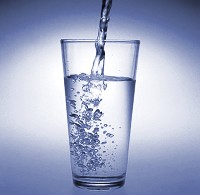| Origin & Development | |
|
Legends & Fairy tales • Earth's Crust Thickness • Underwater Relief • Landscapes • History & Formation • Seismic Activity • | |
| History of Lake Baikal | |
|
History of Explorations • Inhabitants & Settlers • First maps of Baikal • Archaeological Sites • | |
| Lake Baikal Climate | |
|
Introduction • Fogs • Winds & Waves • Ice Conditions • | |
| Fauna & Vegetation | |
|
Mammals • Baikal seal - Nerpa • Ichthyofauna • Invertebrates • Vegetation • | |
| Water of Lake Baikal | |
|
Colour • Transparency • Temperature • Pressure • Depth • Currents • Budget • Chemical Composition • Pollution • | |
| Recreational Areas | |
|
Circumbaikal Railway • Peschanaya Bays • Olkhon Island • Chivirkuysky Gulf • Wooden Irkutsk • Trans-Siberian Railway • | |
| People of Lake Baikal | |
|
People of Siberia • Buryat nation in Baikal • Russians in Baikal • | |
|
| |
| THE FACE OF BAIKAL - WATER © A description of Baikal's water & questions concerning its pollution by S.A.Gurulev A lake is the landscape's most beautiful and expressive feature. It is earth's eye; looking into which the beholder measures the depth of his own nature. The fulviatile trees next the shore are the slender eyelashes which fringe it, and the wooded hills and cliffs around are its overhanging brows. Henry David
Thoreau. Walden and other writings of The Modern Library. New York, 1937, p. 168
People, long since inhabiting the shores of Baikal, have used its water to satisfy their domestic needs. This water is also suitable for industrial use. Over the last few decades, intensive industrial development on Baikal's shores and in its basin has led to the emergence of anthropogenic factors which have a negative impact on the transparency and purity of the lake's waters. And a constant battle is being waged by environmentally aware members of the Russian public to reduce those factors to a minimum. Science has long taken an interest in Baikal's water. A lot has been done and is clear, but there is still much study to be made and research completed. On a number of questions there are differing scientific opinions. For this reason, when talking about the water - its colour, transparency, temperature, pressure, chemistry and likewise about currents, depth, water balance and finally pollution, I have tried to be objective and have given an account of only published scientific material. On several questions I had discussions, sometimes heated, with Irkutsk scientists - B.P.Agafonov, V.A.Golubev, M.A.Grachev, V.V.Lapkanov, V.S.Lepin, G.M.Pulyaevsky, B.M.Shenkman, and M.N.Shimaraev, to whom I express my sincere gratitude. It is important to stress, however, that responsibility for this account is entirely mine. |
